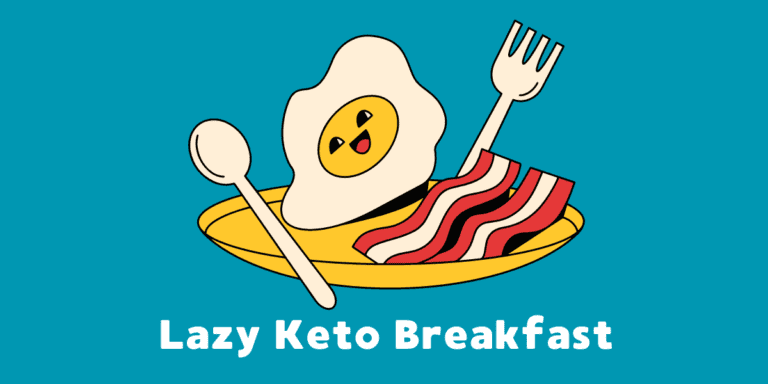11 Proven Long-Term Weight Loss Strategies That Actually Work
Losing weight is one thing, but keeping it off? That’s the real challenge! Did you know that 80-95% of people who lose significant weight regain it within a year? Yikes! But don’t worry, I’ve got your back. In this article, we’ll dive into proven long-term weight loss strategies that’ll help you not only shed those pounds but keep them off for good. No more yo-yo dieting – it’s time for lasting change!
A quick look at our 11 proven long-term weight loss strategies
- Mindful eating
- Balanced nutritional eating
- Intermittent fasting
- Regular physical activity
- Manage stress
- Quality sleep
- Healthy habit formation
- Find social support
- Tracking progress
- Mindset shifts
- Continuous learning
1. Mindful Eating: The Foundation of Long-Term Weight Loss

Mindful eating is easy to implement and crucial for long-term weight management. The goal is to become better aware of eating, drinking, food choices, and how you feel. It involves using your senses to engage with your food, hunger, and fullness cues.
It’s a healthy eating strategy that reconnects your mind to food and body signals. By paying attention to what, when, and how you eat, you can transform your relationship with food. Mindful eating techniques help you tune into hunger and fullness cues leading to better nutritional balance and sustainable weight management.
This will increase your awareness of when and what to eat, and the food you put in your body. You may find yourself treating your body like a sacred temple rather than a used car garage full of crap.
When I started practicing mindful eating I would ask myself questions and consider how I would feel after eating certain foods or meals. I would also think about my activity level for the day. On days I would have more physical activity, I would eat more calories or have an extra snack. And the opposite goes for days I would not be as active.
Ask yourself these questions when practicing mindful eating:
Before Eating
- Am I truly hungry, or am I eating for other reasons? (Boredom, stress, bad habit?)
- What kind of hunger am I feeling? (Physical hunger, emotional, or craving?)
- What do I want to eat right now? (Will it satisfy me emotionally and physically?)
- How will this food or meal make me feel? (Will I be energized, feel lazy, sleepy, or sluggish?)
During Eating
- How does this food taste? (Is it sweet, bitter, or savory?)
- How does this food smell? (Does the smell enhance my enjoyment?)
- Am I eating slowly and savoring each bite? (Or am I rushing through my meal?)
After Earing
- How full do I feel? (Am I comfortably full, overly full, or still a bit hungry?)
- Did I enjoy this meal? (Did it meet my expectations, would I eat this again?)
- How do I feel about the amount I ate? (Is it the right portion for the physical activities I have planned?)
- Do I feel good about eating what I ate? (Do I feel guilty or good about my food choice?)
Asking yourself these questions regularly can help you develop a mindful approach to eating and, leading to a healthier and more balanced relationship with food. But, asking yourself these questions before, during, and after aren’t the only mindful eating techniques to follow. Let’s go over a few more techniques you can start to incorporate.
7 Simple mindful eating techniques:
- Eat Slowly: Take the time to enjoy your meal, allowing yourself to enjoy the flavors and texture of your food.
- Chew Thoroughly: Chewing each bite completely before swelling will aid in digestion.
- Put Down Your Utensils: After a few bites, put down your fork or spoon. This slows down your eating and helps you focus on each mouthful.
- Focus on Your Food: Turn off the TV, put down your phone, and eat without any distractions. This helps you fully enjoy your meal!
- Listen To Your Body: Pay attention to your body’s hunger and fullness signals. Eat when you’re hungry and stop once you feel satisfied, NOT STUFFED!
- Engage Your Senses: Notice the colors, smells, and texture of your food. Enjoy how it looks and taste.
- Reflect on Your Meal: Take a moment to think about how the food made you feel. Did you enjoy it? Did it satisfy you? Reflecting helps you make better food choices in the future.
I’m sure you get the idea of mindful eating and how it can help you with long-term weight management. From personal experience, mindful eating has helped me build better eating habits, make better food choices, and has aided me in maintaining a healthy body weight.
Don’t overthink it! I do not ask myself all these questions every time I sit down and eat. I wrote all these down for you to get an idea of how mindful eating works. Take a handful of these questions that you find helpful and start practicing mindful eating.
The main questions for me, when I think about mindful eating, are usually these 5 questions:
- How will I feel after eating this meal?
- Will eating this meal help me reach my goals?
- Am I eating too fast to enjoy my meal?
- Am I full yet?
- Can I afford to eat this meal based on my activity level for the day?
Yes, these are very simple questions I ask myself but it has worked for me and how I manage my weight. Give mindful eating a try and you’ll be surprised how conscious and aware you become of the foods you put in your body.
2. Balanced Nutrition: Fueling Your Body for Success

A good nutritional balance will supercharge your weight loss success. I’m not talking about some fad diet or leaving out certain food groups, but rather coming up with a sustainable way of eating to nourish your body and support your weight loss goals.
By fueling your body with nutritional-dense foods you will be giving your body the necessary vitamins, minerals, and macronutrients that it needs to thrive. Incorporating a combination of proteins, complex carbohydrates, and healthy fats helps in balancing hormones. Balanced hormone levels are extremely important for effective weight management.
But where do you start?
Here are 6 easy steps to follow on the path to good nutrition:
- Start by keeping a record of what you currently eat: Use a food journal or better yet a food tracking app like MyFitnessPal or Cronometer to stay on track. Track as you go!
- Work toward eating more whole foods: You can easily locate the organic section in any grocery store or use whole-food delivery services like Thrive Market to get your meals directly to your front door. Having only organic foods in your house will ensure whole-food eating.
- Plan your meals and snacks: Plan your meals and snacks accordingly based on your activity level for the day. If you are having a very active day, you may have earned the right to eat an extra meal or snack for the day. This approach will help you stay in a calorie deficit by considering estimated daily calorie burn vs calorie intake for the day.
- Fill your plate with lots of colors: A colorful plate full of vegetables, fruits, healthy fats, and protein will always be more nutritious than a Big Mac, fries, soda, and McNuggets.
- Balance your plate with lean proteins, complex carbohydrates, and healthy fats: Lean protein will ensure lean muscle growth, boost metabolism, and balance hormones. Complex carbs will help control blood sugar levels, aid in weight management by keeping you feeling full for longer, and sustain energy levels. Healthy fats will provide long-lasting energy, aid in nutrient absorption, support hormone production, and help with weight management.
- Stay hydrated throughout the day: Drinking plenty of water throughout the day aids in weight management improves physical performance, enhances digestion, prevents constipation, and detoxes your body.
Following these simple guidelines will give you a good start to a good nutritional balance and help you prepare for long-term success. Start slow with only a few steps and slowly incorporate more as you progress until this becomes second nature. Remind yourself that small changes can result in big outcomes.
3. Intermittent Fasting: A Time-Based way of eating for weight loss

Ahh Intermittent fasting…One of the oldest tricks in the book is to aid in long-term weight loss. It has gained popularity as a flexible and effective approach to weight management. Intermittent fasting focuses on when you eat, rather than on what you eat.
Intermittent fasting involves limiting your daily eating window to a specific number of hours. This approach can be a powerful tool not only for weight loss but also for helping you regulate your hormones that influence hunger and metabolism, potentially aiding in sugar addiction management by stabilizing blood sugar levels.
It can also promote cellular repair processes and improve insulin sensitivity. The beauty of intermittent fasting lies in its adaptability- you can choose a fasting schedule that works best for you.
Here are a few popular intermittent fasting approaches you can Try:
- 16/8 Method: Fast for 16 hours and eat within an 8-hour window
- 5:2 Diet: Eat normally for 5 days and restrict calories for 2 non-consecutive days
- Eat-Stop-Eat: Incorporate one or two 24-hour fasts per week
- Warrior Diet: Fast during the day and eat one large meal at night
- Alternate-Day Fasting: Alternate between fasting days and regular eating days
- 12/12 Method: A gentler approach with 12 hours of fasting and 12 hours of eating
When I started practicing intermittent fasting the 16/8 method was my go-to and I would challenge myself to a 24-hour fast to help speed up ketone production for rapid weight loss.
Even though intermittent fasting is an effective weight loss strategy, it’s important to focus on nutrient-dense foods during your eating window and stay hydrated throughout the day. Now, before you attempt intermittent fasting, please consult with your healthcare professional. Especially if you have any underlying health conditions.
4. Regular Physical Activity: Moving Beyond the “Weight Loss Workout”

One of the biggest keys to long-term weight management lies in finding forms of exercise that you enjoy. It’s not about punishing yourself with grueling workouts you dread; it’s about finding physical activities that make you feel energized and strong. A routine of physical activity should be something you look forward to, not a chore.
You may have to sample different types of workouts until you find what works best for you. Maybe you prefer high-intensity interval training (HIIT workouts) for a quick workout. Or, maybe yoga gives you that nice calm feeling. Let’s not forget strength training, as it will spike your metabolism into over-drive and shape your lean muscle like nothing else.
The idea here is to come up with a workout plan that is sustainable for your life long term. Need some inspiration?
Here is a quick list of daily movement routines that you can easily accommodate in your long-term weight-loss strategy:
- A brisk 15-minute walk after lunch: This will keep your metabolism firing and help you burn additional calories each day to help you hit your weight loss goals.
- Try a 30-minute bodyweight workout session after dinner: Wait at least an hour after dinner before starting your bodyweight workout. This approach will help you burn off calories from dinner and keep your metabolism going when you fall asleep.
- Create a 15-minute HIIT workout: HIIT workouts are intense but very effective. Did you know that you burn more calories once you are done with a HIIT workout? Crazy huh!
- Incorporate exercises while at work: This will work wonders if you have an office job. Do 3 sets of 10 reps of squats, lunges, or burpees while at work. This will get blood pumping through your body and wake you up if you are feeling tired in the afternoon.
Remember consistency trumps intensity!! Find what works for you and turn it into a habit. As you progress, incorporate more challenging activities throughout the day and watch your unwanted weight melt off.
5. Stress Management: The Hidden Key To Weight Loss

Did you know that stress is linked to weight gain? When we think about losing weight; diet and exercise are the first thoughts that come to mind. But have you ever taken into account how stress might be putting the kibosh on your efforts?
It’s true – chronic stress is a huge obstacle when trying to lose weight in the long term. It sets off the release of the hormone cortisol, which can increase appetite, particularly for high-calorie foods that you should be avoiding.
It’s no surprise that overeating under stress will result in weight gain and make losing those added pounds even harder. Stress can interfere with sleeping patterns, reduce motivation for physical exercise, lower your immune system’s ability to fight off diseases, and negatively impact your metabolism.
That’s why it’s so important to focus on stress reduction techniques while on a weight loss plan. Simple stress control techniques integrated into your day will make losing weight that much more balanced and sustainable.
Are you ready to take control of your stress level to amp up your potential for weight loss?
Here are a few quick stress-busters that you can start working on today:
- Deep-breathing exercises, just five minutes a day will work wonders!
- Progressive muscle relaxation: do it before bed.
- Meditation for at least 15 minutes a day.
- Stretching or light exercise breaks throughout the day.
- A gratitude journal: focusing on positives.
- Limit screen time, especially before bed.
- Engage in a hobby or some other creative activity that you enjoy to help relieve stress.
- Get social support from family and friends when feeling stressed.
All these techniques will aid in stress-eating prevention. My go-to’s are meditation, deep breathing exercises, and talking to friends and family when I am too stressed out.
Pick a few of these stress management tips and start incorporating them. I promise you will feel a difference in your daily stress levels.
6. Quality Sleep: The Often Overlooked Weight Loss Tool

Sleep is an overlooked game changer in long-term weight loss strategies. The relationship between sleep and weight management is deeper than most people think. Poor sleep cycles screw up your hormones, especially ghrelin and leptin, the two hormones responsible for hunger and fullness!
When you don’t get enough sleep, ghrelin levels rise causing you to feel hungry, while leptin decreases making it harder to feel full. This hormonal imbalance causes you to overeat and crave the wrong types of food which will ruin your goal of losing weight. While you sleep, your body is busy balancing your hormones which results in a better metabolic rate.
Ready to use the power of sleep to your advantage for weight management?
Here’s a quick guide to better-quality sleep:
- Maintain a regular sleep schedule, even on weekends
- 7-9 hours of sleep daily
- Avoid caffeine and large meals just before going to sleep
- Limit screen time one hour before bedtime
- Establish relaxing activities around bedtime (reading or light stretching)
- Make your sleep environment cool, dark, and quiet
- Invest in a mattress and pillows that are comfortable
- Use white noise or earplugs if the environment is noisy
The changes that you make in line with these sleep-friendly strategies won’t just be improving your rest; they’ll be boosting your general health and actual weight loss potential. Sweet dreams and happy weight management!
7. Habit Formation: Building a Foundation for Lasting Change

To maintain weight loss over the long run, it’s essential to build new healthy weight loss habits. To form new habits that will support long-term weight loss we must understand habit formation.
The habit cycle consists of three parts:
Cue: This is the trigger or signal that starts the habit. Cue can be emotions, thoughts, internal, or external, like a time of day, location, or event. For example, feeling tired is an internal cue that could trigger you to drink coffee, while an external cue could be hearing loud rock music that can trigger you to workout.
Routine: This is the behavior that takes place in response to the cue. For example, ordering food because you feel hungry.
Reward: The positive result that happens as a result of the routine. In the case of ordering food, the reward may be enjoying the food and satisfying your hunger.
The more you use this loop, the more solidified the habit becomes. Use this to your advantage when creating new habits. Knowing how habits can be formed has helped me build a strong routine of exercise, healthy eating, and prioritizing sleep.
You can do the same. Here is a powerful tip when it comes to building habits that you may find difficult. If you respond negatively to a cue, flip it into a positive. For instance, you may not want to go to the gym because you are not in the mood. Take that “not in the mood” feeling and think of it as the cue to go to the gym or exercise! This worked for me and helped me build a consistent active schedule for myself.
Habit formation strategies like the one mentioned above are particularly effective in the case of overcoming weight-loss plateaus by ensuring you maintain your routine when motivation wears out. As always, start small and build from there. Eventually, you will notice your new habits become second nature.
Here’s a step-by-step guide to build new habits:
- Identify a specific habit you want to change
- Pinpoint the cue that triggers your current behavior
- Choose a new, healthier routine to replace the old one
- Experiment with different rewards to reinforce the new habit
- Start with tiny changes and gradually increase the difficulty
- Track your progress to stay motivated
- Be patient – habit formation typically takes 66 days on average
- Celebrate small wins along the way
Remember it’s about building sustainable lifestyle change rather than quick fixes! Another tip to help you build habits is to attach them to existing routines and make use of visual reminders. With time and practice these behaviors will become part of your daily life and assist in long-term weight loss and well-being.
8. Social Support: Surrounding Yourself with Success

Your social circle can either make or break long-term weight loss. A good support network is not only a useful tool, but it is quite indispensable in maintaining the results over the long run. Social support associated with weight loss keeps one motivated, accountable, and encouraged at the time of difficulty.
Be it a workout buddy, a family member who’s understanding, or an online community, the more they understand and root for your goal, the higher your likelihood of success. Supportive relationships can help you stay committed to your habits of health and can provide advice and celebration in every victory—big and small, taking place in your life. The power of shared experiences and mutual support should not be underestimated in your weight loss journey.
Let’s highlight a few benefits for supported health groups:
- Greater accountability for your goals
- Motivation from others in hard times
- Tips and strategies based on other peoples’ experiences
- Less feeling like you are alone
- Opportunities for friendly competition
- Support in times of hardship
- Celebrations of milestones and successes
- Never-ending reminders for your ‘why’
Many social settings make it challenging, but it is possible to stick to your weight loss goals. Try to suggest healthier restaurant options for when you go out with your friends, or perhaps bring a nutritious dish to the gathering. Remember, politely refusing offers of food not in line with your intentions is perfectly acceptable. By stating your intentions and having good support from the people around you, it will be an easier process to stay on track with your long-term weight loss plan, even in social settings.
9. Tracking Progress: Beyond the Scale

As useful as that number on the scale could be, it would not capture the whole truth of your weight loss journey. Depending solely on weight might give you the wrong signals and is very discouraging. It is vital to keep track of progress with various methods: some on the scale and some off the scale.
Other ways of noting progress can give a better picture of improvements in health and help keep a healthy body image. These alternative forms of tracking can reveal changes in your body composition, fitness level, and overall well-being that cannot be revealed by the scale alone. Using diversified progress metrics, you are much more likely to stay motivated and appreciate the full spectrum of benefits these healthy lifestyle changes can bring.
Let’s look into some great tools and methods for tracking your progress beyond the scale:
- Taking before and after pictures: Nothing can beat viewing before and after pictures for a big motivational boost to keep pushing through plateaus and continued progress.
- Measuring body circumferences: Measuring waist, hips, arms, and thighs monthly can help you grasp how your body composition is changing every month.
- Tracking energy levels and mood in a daily journal: Journaling will help you become better self-aware of small changes as you progress in your weight loss journey. You may become aware of improved energy levels, better physical mobility, and mental clarity.
- Monitoring sleep quality and duration: Improved sleep quality and duration = body changing into a new and better you!
- Recording strength gains: Keeping track of strength gains can motivate you to push yourself harder.
- Noting improvement in clothing fit: Cloths fitting better is always a big plus! And the best part is that you will even start to look fitter in clothes! The compliments you receive from others will further boost your drive to push harder.
- Recording improvements in cardiovascular endurance (e.g., running distance or time): Measuring your endurance and keeping track of cardiovascular milestones will motivate you to set new goals and reach new boundaries.
- Assessing skin health and complexion changes: As you progress you may notice your skin clearing up, becoming less oily, and may even see your facial features change representing a better fitter you! You may even hear your friends and family tell you that you look younger as well.
10. Mindset Shifts: Embracing a Lifestyle Change

Achieving long-lasting weight loss isn’t just about what you eat or how much you exercise, it goes deeper than that. It’s all about shifting your mindset. To become a better version of yourself you can’t keep thinking the same way, you have to make a mental shift to a better you.
A powerful long-term weight loss strategy involves shifting your away from the restrictive “I’m on a diet” mentality and embracing a sustainable lifestyle change. This shift in attitude towards long-term success helps with weight management by instilling positivity and sustainability within health approaches. When start seeing things through the lens of a lifestyle change, not a fix, you are more likely to make choices that will support your goals in the long run.
This whole perception of transformation helps one develop a positive relationship both with food and the body. Think of foods in terms of nourishing your body and enjoying foods in moderation, instead of good or bad.
Listen to your body’s cues for hunger and fullness; pay attention to mindful eating. Remember, your body is your ally on this journey, not your enemy. Patience and self-compassion are equally important. Sustainable weight loss is a journey, so it will take time, and you may experience both highs and lows. Be kind to yourself, celebrate small victories, and learn from setbacks, but don’t view them as failures.
Let’s go over a few strategies to help you shift into this new mindset:
- Focus on how foods make you feel, not just their calorie content
- Practice positive self-talk and affirmations
- Set non-weight related goals, like improved energy or strength
- Reframe “failures” as learning opportunities
- Celebrate progress, no matter how small
- Surround yourself with positive influences and support
- Practice gratitude for what your body can do
- View exercise as a way to feel good, not punishment for eating
By adopting these mindset shifts, you’re not just working towards weight loss—you’re creating a healthier, happier relationship with yourself. This holistic approach is what brings sustainable change and wellness.
11. Continuous Learning: Staying Informed and Motivated

In the ever-changing world of health and fitness, staying informed is key to long-term weight loss success. New emerging evidence-based weight loss research can help you make informed decisions on your weight loss goals and health.
Subscribe to reputable health journals, follow trusted nutritionists and fitness experts on social media, or join an online community focused on healthy living. This will help you stay informed and keep you on the edge of your seat when it comes to learning new strategies for overcoming weight loss plateaus.
For instance, recent research on healthy gut microbiome has revealed that gut microbiome impacts weight management, opening up new avenues for dietary approaches. But, don’t just stick to theories, put your knowledge into practice.
Another benefit of learning new healthy recipes and workout routines is that it can reignite your enthusiasm and challenge your body in different ways. This can help bust through stubborn plateaus and help your progress as you advance on your weight loss goals.
It also prevents boredom by ensuring you’re constantly challenging your body to adapt to new changes in routine, exercise, and diet. Remember, we are all different and your weight loss journey should be unique. Approach it in a special manner that will continue to work for you.
By embracing continuous learning and exploration, you’re not just working towards weight loss – you’re embracing a new lifestyle of health, growth, and self-discovery.
Wrapping Up
There you have it – 11 powerful strategies to make your weight loss journey a lifelong success story! Remember, this isn’t about quick fixes or drastic measures. It’s about building a lifestyle that supports your health and well-being for years to come. So, which strategy resonates with you the most? Why not start implementing it today? Your future self will thank you! And hey, don’t forget to share your progress and inspire others along the way. You’ve got this!







